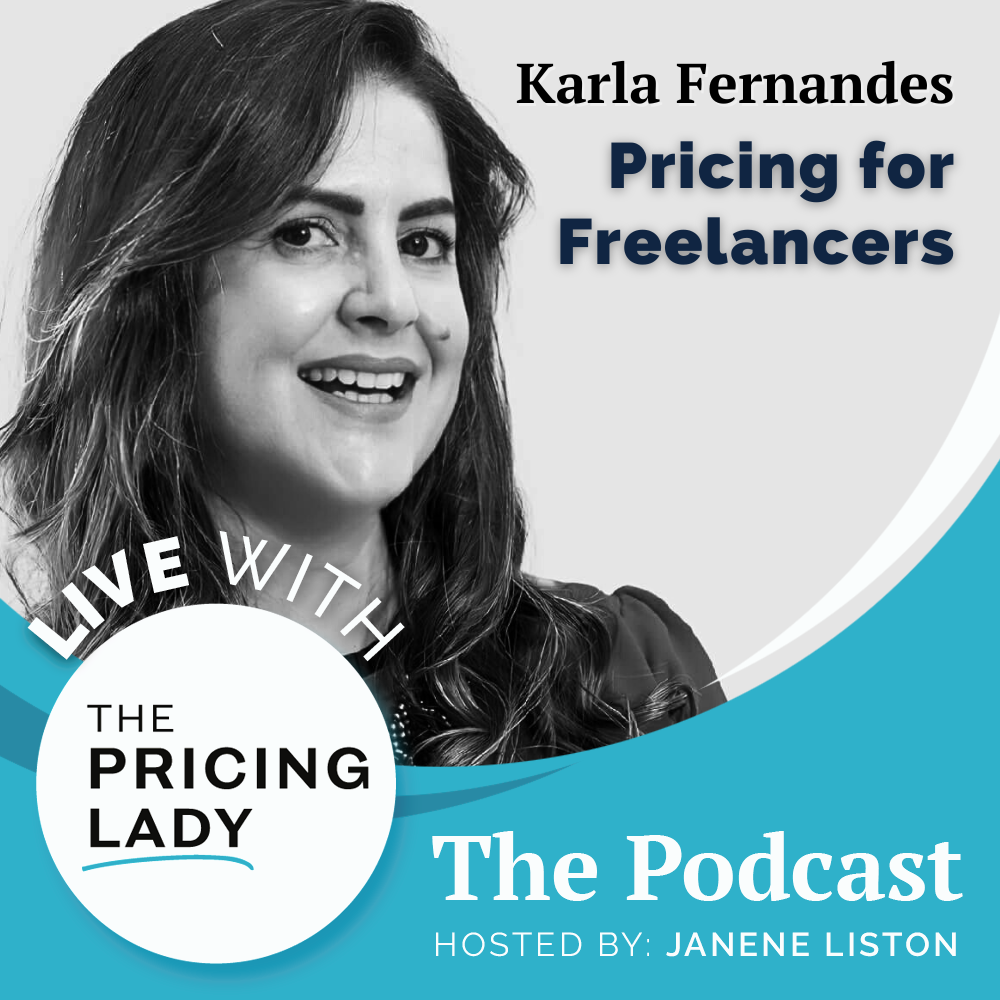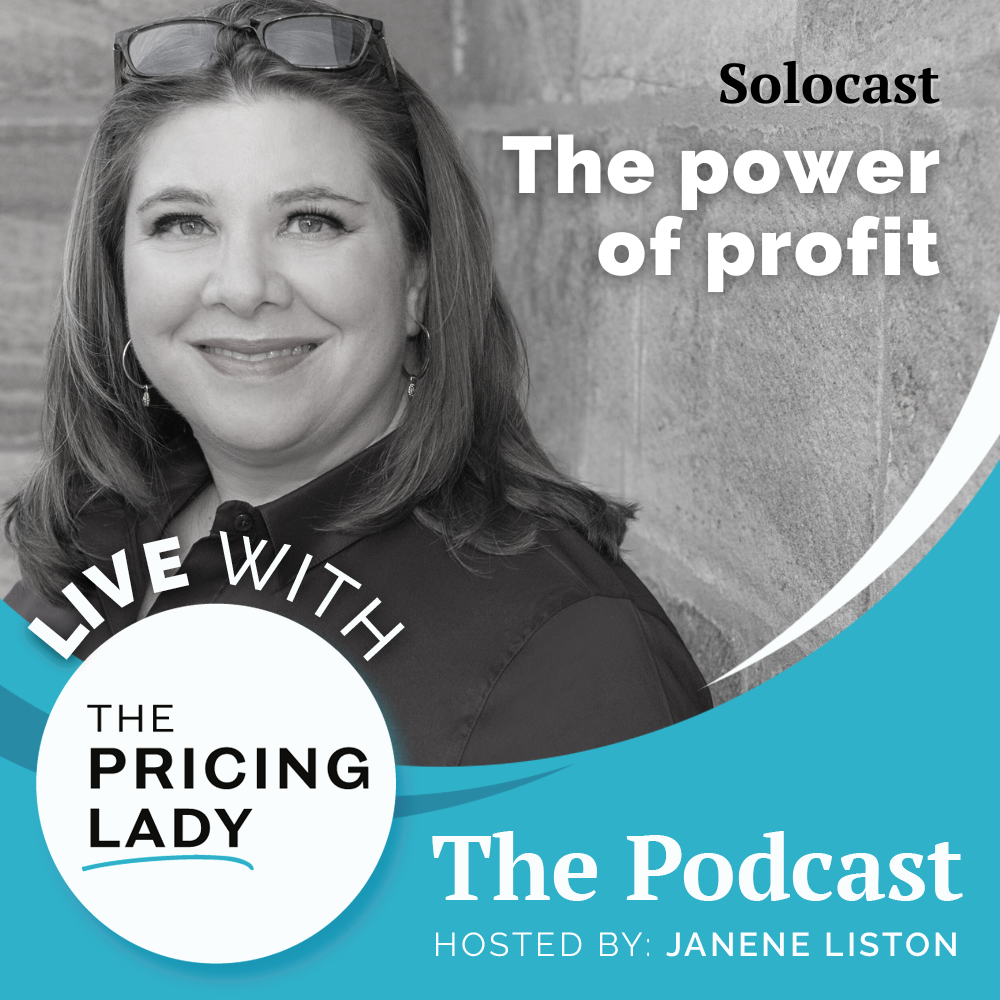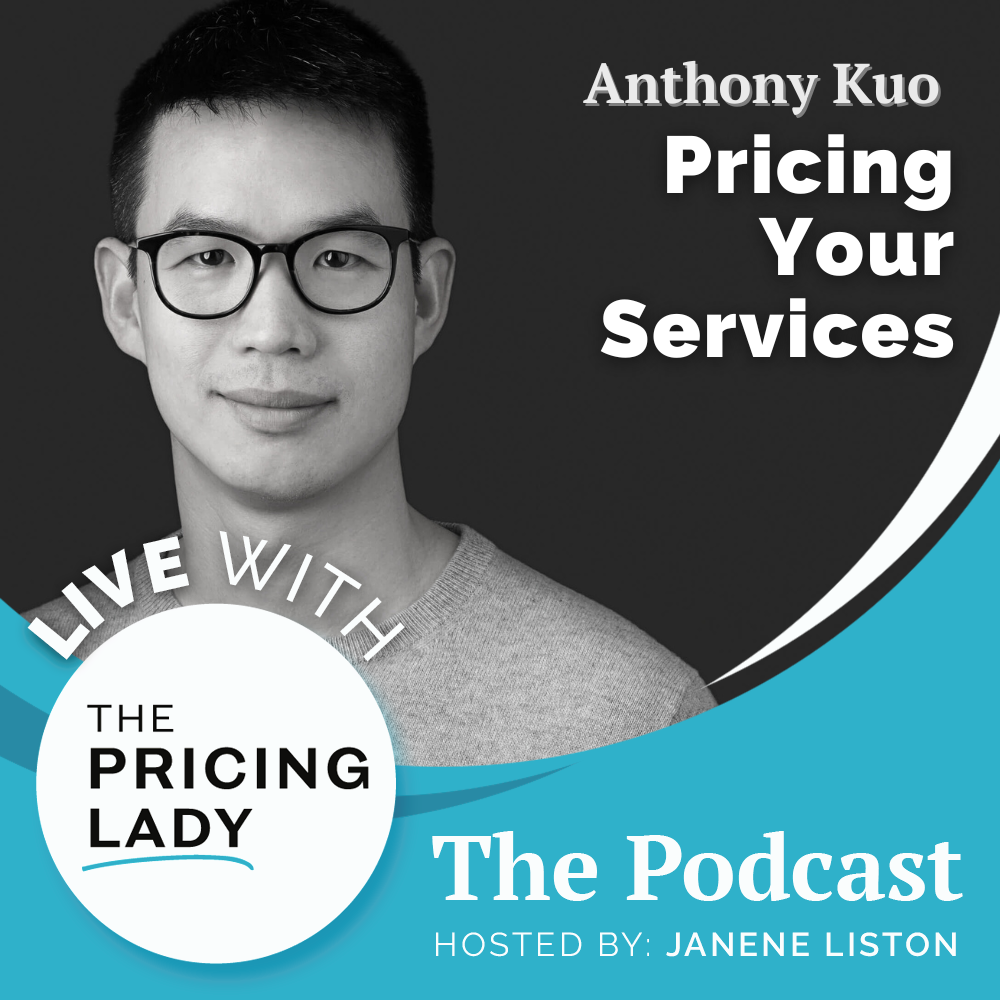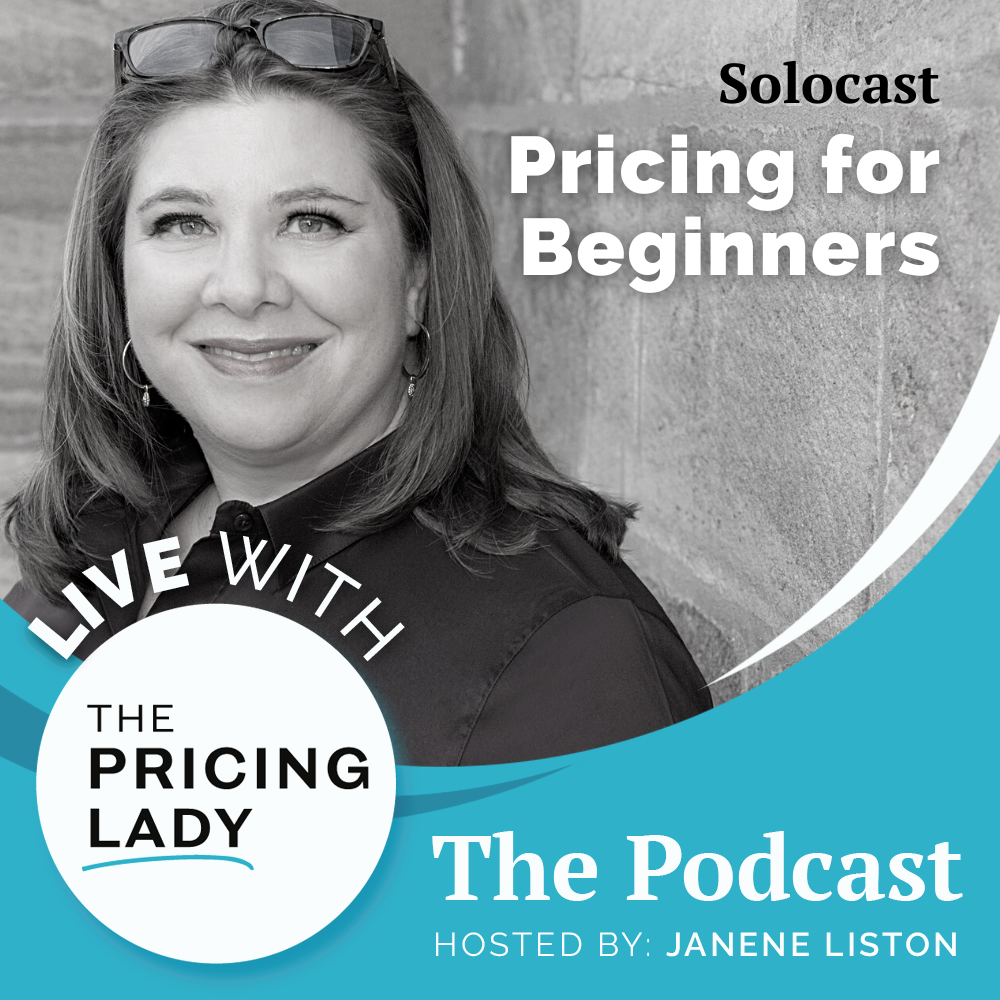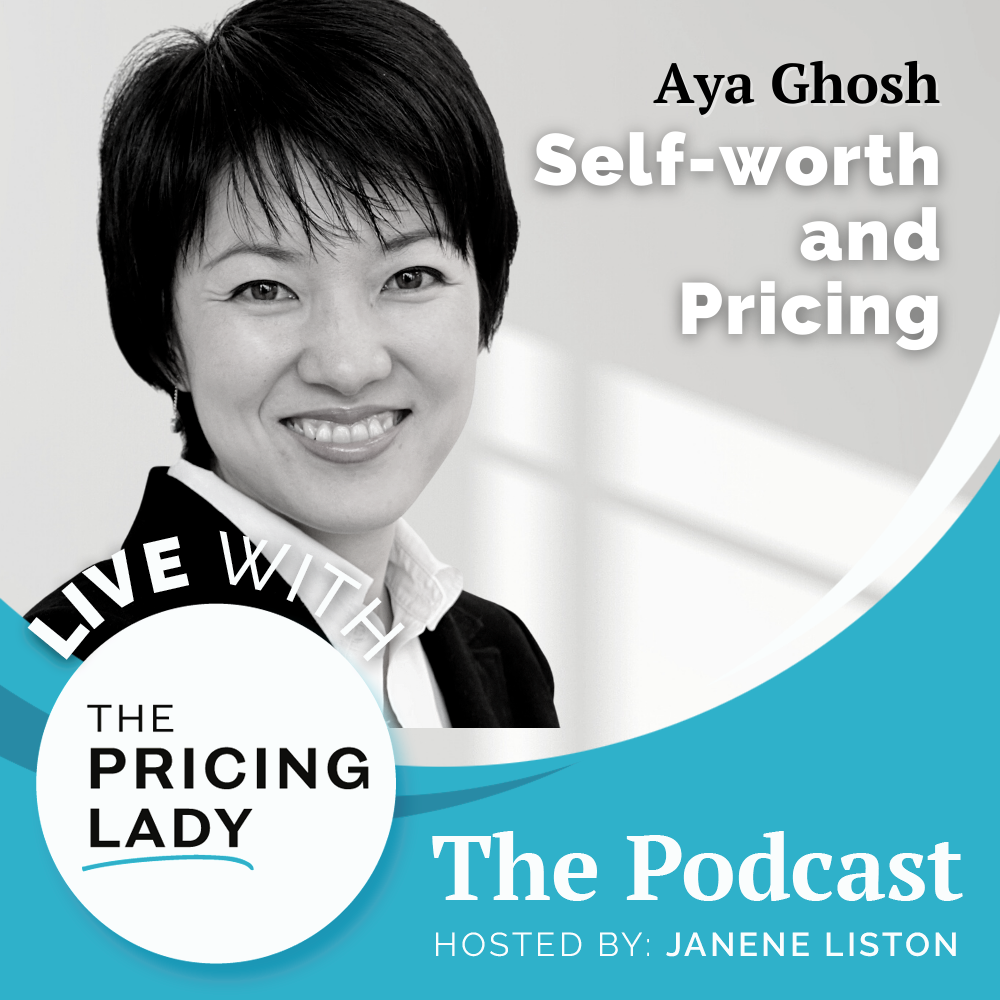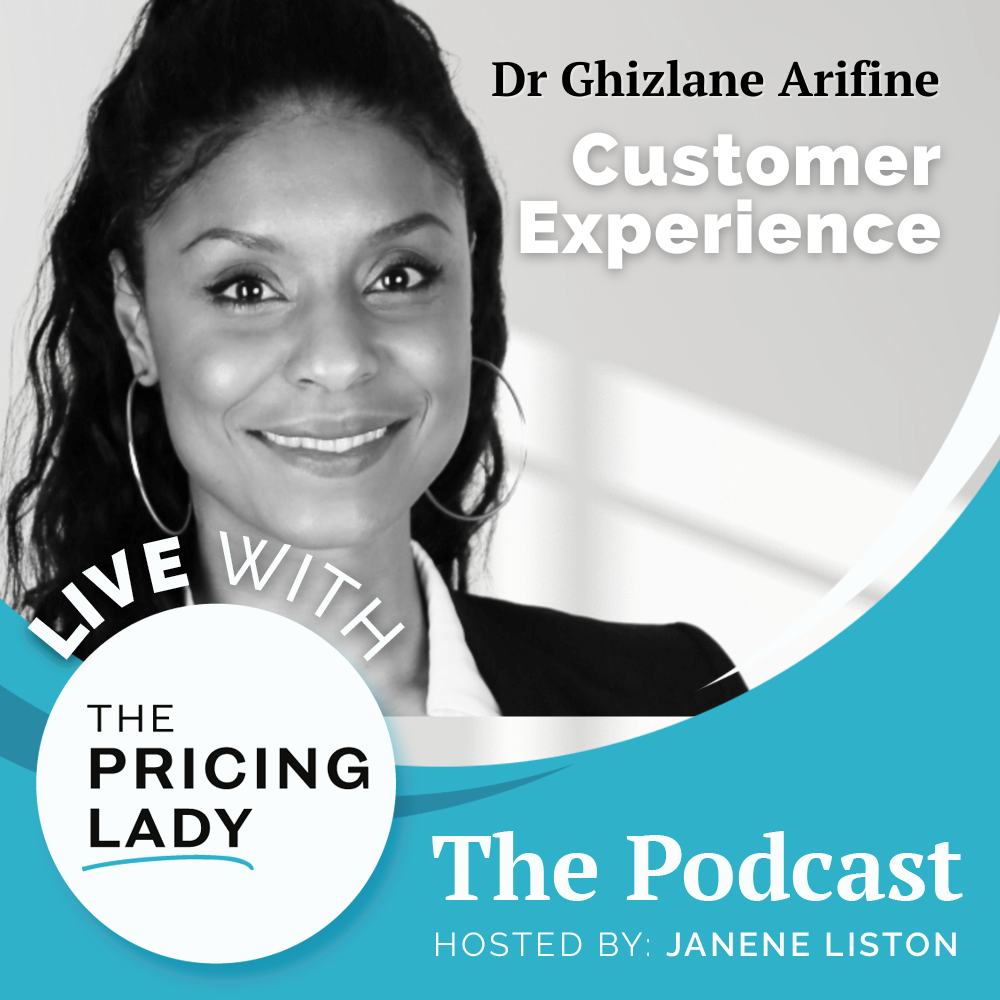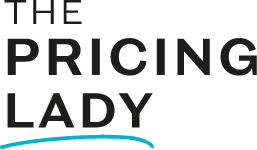There are three types of discounts effective, ineffective and unnecessary. Most small business could benefit from being more careful about the discounts they offer and when. In fact, when it comes to “leaking” profits, poor discounting habits are often the biggest drain. It makes sense to put more rigor and thought behind what you’re doing. Improve your business decisions and improve your business.
Preparing in advance for what you will do and when, and having a clear internal policy for your team (if you have one) will help you eliminate unnecessary discounting. It can also help you improve the effectiveness of the discounts you do offer.
In This Episode
We take a look at 6 questions you should be asking yourself before you decide to grant that discount. They’re also useful to consider before you decide to lower the price. These questions will help you be more clear about why you’re offering them and ensure you have a solid business purpose supporting the decision.
Enjoy the episode!
Podcast Episode Highlights
- 0:00 Introduction
- 02:45 Business Purpose of Discount
- 07:02 Impact needed for Success
- 08:01 Impact on Perception
- 09:04 Who am I really targeting
- 10:18 How can I monitor how this is going
- 12:19 Do I still want to offer a discount
- 14:07 Wrap Up
Favorite Quotes
“Discounting is one of the fastest way to erode your profits. When you are offering a discount, if you are trying to decide whether or not to offer one, you need to make sure that it is a necessary discount and that it can have the desired effect before you offer.” Janene
“Most people assume that a lower price will bring enough, additional volume to enable them to hit a higher profit level. But this rarely happens because in most industries, prices are not that elastic.” Janene
“That is an enormous amount of additional volume to achieve. And then you need to start asking yourself more questions, like where in the heck is that going to come from?.” Janene
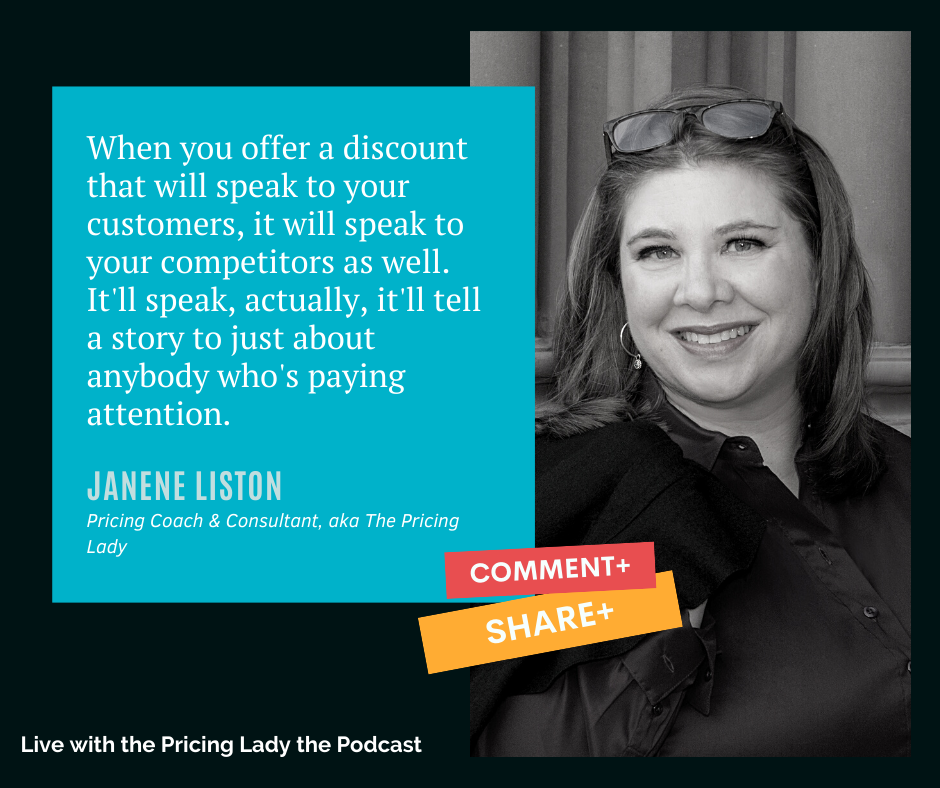
“If you’re just scared of how people react, that’s not a good sound reason to give a discount. Good reasons are things like, increasing the volume or your market share or your profitability, but then you need to understand the numbers behind it.” Janene
“You want to understand how it’s going to impact perceptions. And then if there are any downsides to that, you need to figure out how you’re going to mitigate those circumstances.” Janene
“If you’re repositioning, then you’re going to want to monitor our sales really picking up. Because if they’re not, then you may want to bring the back price back to where it was before.” Janene
“When it comes to discounting, prepare in advance, prepare yourself some guidelines around when you might offer them and how you, and under what conditions you will, so that you are more prepared when those times come up.” Janene
Rate, Review and Follow the Show on Apple Podcasts
“I’ve just found my Pricing Resource!” … “A binge worthy podcast.” … “I learned so much about how to improve my profitability.”
If that sounds like you, please consider rating and reviewing the show. It helps me spread the word to more people and ultimately get more small businesses on the path to sustainable profitability and business success. Click right here, scroll to the bottom, tap to rate with five stars, then select “Write a Review.” Last let me know what you loved most about the episode!
One more thing. If you don’t already, follow the podcast. New episodes come out every couple of weeks, plus bonus episode. If you’re not following there’s a good chance you’ll miss something.
Reach Out Connect and Book a Call with Janene
Website | Linkedin | YouTube | Facebook | Email List
Get started improving your business. Sometimes it’s difficult to know where to begin. I suggest you Download the the self assessment Pricing Scorecard. Get a view of what’s working and what’s not working when it comes to pricing in your business. Figure out where to start making improvements.
Get in touch with Janene. If you’ve got a question that needs answering, a challenge you’re facing or you have suggestions for future topics or guests, let me know. Contact Janene.
Listen up! Don’t miss out. There’s a lot going on and you’ll want to be in the know. Follow my YouTube channel (rate it too please) so you don’t miss an episode of Live with the Pricing Lady or join my Email List.
Transform your business and life. My business is about helping you build a better business. One that’s profitable and where you can confidently charge for the value you deliver. Curious about my coaching and consulting offers, check them out. Let’s see how we can work together. Book a complimentary Discovery Call today!
Episode Transcript
Hello, everyone. And Welcome to Live with The Pricing Lady, the Podcast. I am Janene Liston your hostess. I am so excited to have you listening or watching today, whether you’re listening on the podcast or watching on YouTube, it’s always a pleasure to have you here. If you enjoy the show, be sure to rate and review it and leave me your comments today.
We are going to be talking about questions to ask yourself before offering a discount. Now, if you follow me or you know anything about pricing, you know, that discounting is one of the fastest way to erode your profits. When you are offering a discount, if you are trying to decide whether or not to offer one, you need to make sure that it is a necessary discount and that it can have the desired effect before you offer.
Now I have had all kinds of reasons over the years for why people give discounts. Well, because my competition is doing it. Well because it’s Saturday on the 27th day of the month. Oh. Because I think it’s nice to offer first time customers a little deal. You know, there’s all kinds of different reasons, but what it always comes down to in my opinion, is doing what you can to ensure that it has the desired impact that you want on your business.
Let’s take a look at these questions, so that next time you consider offering one, you can do it the right way.
Business Purpose of Discount
First question to ask yourself is what is the business purpose of this discount? This is one of the most important questions that you can ask yourself. And probably also the thing that most people just don’t really pay attention to.
The assumption that most people make is that if they offer a discount, more people will buy. That may be true in some cases, it is often not true in many cases. And more importantly, in order to achieve the same profit as before, you would have to increase volumes significantly. And we’ll take a look at that in a moment, but the first thing you need to ask yourself is what is the business purpose and by business purpose.
Are you trying to just increase market share? Or are you trying to simply increase the volume? Are you trying to optimize your revenue? Or are you trying to increase your profitability? Most people assume that a lower price will bring enough, additional volume to enable them to hit a higher profit level. But this rarely happens because in most industries, prices are not that elastic.
And by elastic, we mean, if you make a small price change, it has a big impact on volume. That’s the elasticity. Now here’s an example for you to give you a frame of reference. If you have a product that you’re selling and that product has a gross profit of 40%, that means the price is 100. The manufacturing costs are 60 per or 60.
Yeah. And that means that your gross profit is 40%. If you have a product with the gross profit of 40%, and you decide to lower the price by 10%, you will need 33% more volume to achieve the same gross profit. And 33% more volume is enormous. That is an enormous amount of additional volume to achieve.
And then you need to start asking yourself more questions, like where in the heck is that going to come from? Right. So where are you going to find 33% more people to buy? And that’s just to break even. That’s not even true. More profit. So you really have to understand that because if you don’t understand that, then you’re not going to be out there trying to figure out where to get that additional volume.
Understanding Good Reasons to Give a Discount
That’s why it’s so important. Now, if your objective is simply to sell more and you don’t really care so much about the profitability level of those sales. So this is what happens in say the clothing industry or in the retail industry, why they offer such drastic prices is at a certain point in time, they don’t really care so much about the profit that they’re making. They just need to get rid of the inventory so they can bring the new stuff in.
That’s why you see the prices dropped so quickly, but in most small businesses, you can’t use that same principle because they’re not trying to do a high volume sales. This is true in some small businesses don’t get me wrong. Typically the people who are coming to me with pricing struggles often are not really positioning themselves in high volume businesses, but they’re using high volume business tactics because that’s what they know from things like the retail industry, where they’re a consumer.
Also, I think I may have said before that there’s all kinds of reasons that people, give discounts sometimes it’s just because they’re scared to say the price out loud or they’re scared of the customer’s reaction. If that is the case, if you’re just scared of how people react, that’s not a good sound reason to give a discount.
We want to be able to separate those things. Good reasons are things like, increasing the volume or your market share or your profitability, but then you need to understand the numbers behind it.
Impact Needed for Success
So the second question is what’s the impact needed for success. So again, if you understand that you need 33% more volume, then you’re going to put a plan in place to make sure that’s going to happen.
Otherwise you’re just going to end up losing money on this discount that you’re offering. And that’s definitely, usually not your intention. Right? So what’s the impact of it also. So that you understand what’s needed for it to be successful. You know, maybe to get 33% more volume, you actually have to go to a different target customer group, or you have to position the product from a value perception in a different way.
There could be things that you need to do in order to ensure that that discount is perceived in the right way for it to be effective and have the desired outcome that you are looking for.
Impact on Perception
The third question is what’s the impact on perception. When you offer a discount that will speak to your customers, it will speak to your competitors as well. It’ll speak, actually, it’ll tell a story to just about anybody who’s paying attention. And you want to think about, “okay, what is that?” You can offer a discount and it can be a signal to your competitors.
It can be perceived in a negative way in terms of the value perception from the customer’s perspective, especially if they’re repeat customers who buy regularly from you, then if all of a sudden you drop the price, their perception changes. They may consider, it’s not as valuable or good a product as I thought it was or go to services. I thought it was. You want to understand how it’s going to impact perceptions. And then if there are any downsides to that, you need to figure out how you’re going to mitigate those circumstances.
Who am I really targeting?
Next question. Who am I really targeting? Because sometimes your discounts are targeted towards certain segments or sub segments of your customer groups. And if you’re targeting a specific segment, then you need to be very careful about how you do that. Otherwise you could end up cannibalizing other parts of your business.
And that’s very important. Let’s say you provide a service, to corporates and then directly to individuals. And you’ve decided you want to lower your price to individuals. Well then companies or corporates that you’re targeting, they may see that, depending on how you communicate it. And then ask you how come the price is changing here, but not for them. And it creates this situation where you end up having to have awkward conversations that you’d rather not have with your clients. You need to understand who you’re targeting and what impact that we’ll have. And again, if there’s anything that you need to mitigate in order to ensure the success, the outcome that you’re looking to achieve.
How can I monitor how this is going
The next one is how can I monitor how this is going? Now, this may seem a silly thing for a small business. You may think, why do I need to monitor that, I just sell a few of them at this lower price. It makes me happy because I’m selling stuff. But consider your target.
What is the business purpose of this discount? Without monitoring how can you ensure you hit that business purpose. If you’re always granting a special price, it’s no longer special just the price. And if you’re repositioning, then you’ll want to monitor if sales are picking up. If not, then you may want to bring the back price back to where it was before.
In order to make such decisions, you have to monitor. What are you going to monitor to determine if your discount is actually having the desired impact and what means success. You define what means success and you define also, okay at what point am I going to say, okay, this isn’t successful and I’m going to go back to where I was before, or I’m going to change something or do something else different. Right. That’s why you want to be able to monitor so that you can adapt if things don’t quite turn out the way you expect them to.
Honestly, when people, well, let me put it this way. Very rarely when companies lower the price, especially small businesses, do we see big increases in volume. So quite often they offer discounts. They don’t get the results that they wanted. You want to be able to recover from that as quickly as possible. If that’s the case.
Do I still want to Offer a Discount
Now the final and last question is really important and so very simple. And that’s to ask yourself, okay, now that I’ve looked at this and asked the last five questions and thought about this with a little bit more of a focus and a business, full concentration to it. Do I still want to offer this discount?
Because this is so important, you may get to the end of these first five questions and realize, you know what actually I would be better off doing something else. The sixth question while it is so simple, it is absolutely critical when you’re thinking about offering these discounts. Because once you’ve looked at the previous questions, you may decide that a different strategy is actually going to be better for you and for your clients or your customers in the long run.
Those are the questions I suggest that you ask yourself before you’re granting discounts out there. Now there are a lot more questions, that we could be talking about here, but these are really the main ones, the basic ones that you want to be in the habit of taking a look at.
When you were thinking about granting discounts. And this goes to something that I say to people all the time, that when it comes to discounting, prepare in advance, prepare yourself some guidelines around when you might offer them and how you, and under what conditions you will, so that you are more prepared when those times come up. And you can answer more with more certainty and more confidence.
Wrap Up
That is what I wanted to share with you today, ladies and gentlemen, let me recap those questions. The first one is what is the business purpose of this discount? What’s the impact or what’s needed for this to be successful? What pers what impact does it have on the perception of either the customer and or the competition?
Who am I really targeting with it and would they buy it anyhow? Even if I didn’t offer the discount, then we look at how can I monitor the success. So how can I monitor if the desired outcome is happening and where will I stop if it’s not. And then the last question is, do I still really want to offer this discount or not?
So those are your six questions. Write those down, have a think about it. The next time you’re thinking about offering a discount, it will really help you make this a much more sound business decision and help you be able to serve both yourself, your business and your clients better in the long run. I wish you all the best, everyone.
If you enjoyed this episode, be sure to head on over to Live with The Pricing Lady, the Podcast on Apple Podcasts and leave me a review. If you have questions or comments, then reach out to me at www.ThePricingLady.com. I wish you all the best. And as always, everyone enjoy Pricing.

